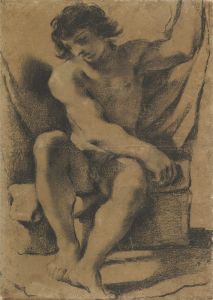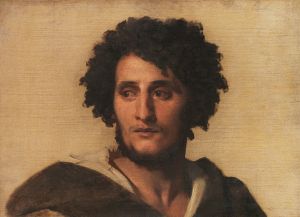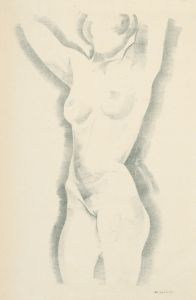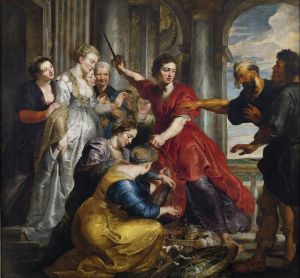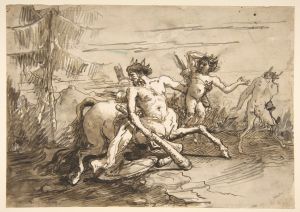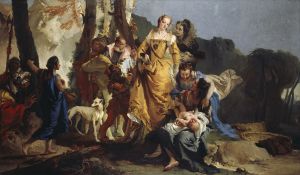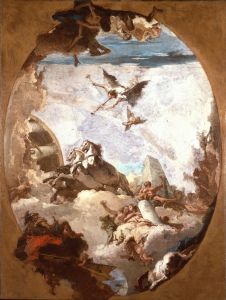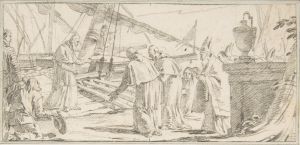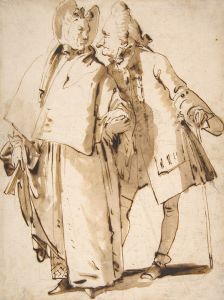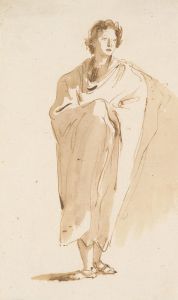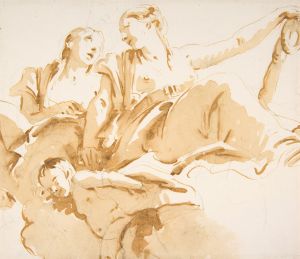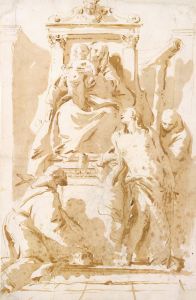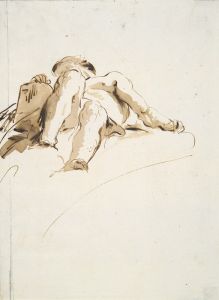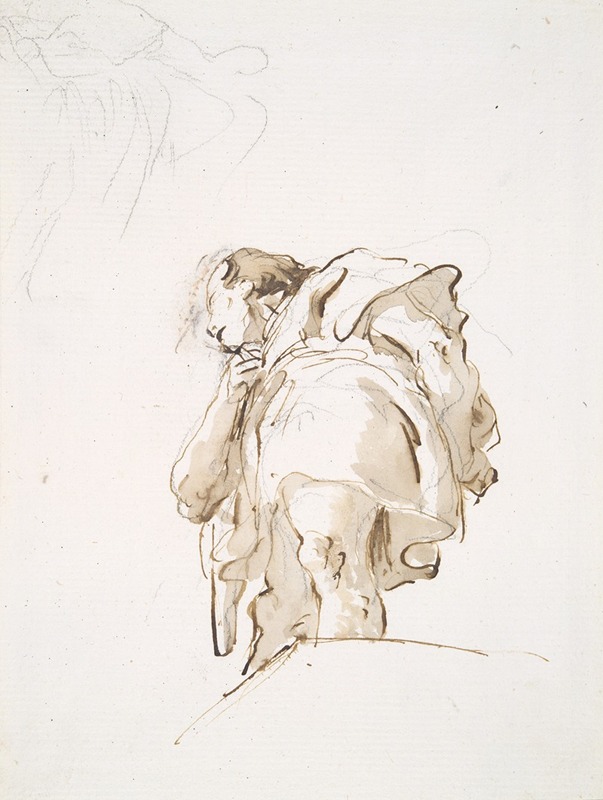
Standing male figure seen obliquely from below
A hand-painted replica of Giovanni Battista Tiepolo’s masterpiece Standing male figure seen obliquely from below, meticulously crafted by professional artists to capture the true essence of the original. Each piece is created with museum-quality canvas and rare mineral pigments, carefully painted by experienced artists with delicate brushstrokes and rich, layered colors to perfectly recreate the texture of the original artwork. Unlike machine-printed reproductions, this hand-painted version brings the painting to life, infused with the artist’s emotions and skill in every stroke. Whether for personal collection or home decoration, it instantly elevates the artistic atmosphere of any space.
Giovanni Battista Tiepolo's Standing Male Figure Seen Obliquely from Below is a drawing attributed to the renowned Venetian artist, who was active during the 18th century. Tiepolo is widely celebrated for his mastery of the Rococo style, particularly in fresco painting, and his ability to depict dynamic figures and dramatic compositions. This particular work is a study in pen and ink, showcasing Tiepolo's skill in capturing the human form with precision and vitality.
The drawing depicts a male figure standing in a contrapposto pose, viewed from a low vantage point. This perspective emphasizes the figure's stature and creates a sense of monumentality, a technique often employed by Tiepolo in his preparatory studies for ceiling frescoes. The use of foreshortening in the figure's limbs and torso demonstrates Tiepolo's deep understanding of anatomy and perspective, hallmarks of his artistic training and practice.
The purpose of this drawing is believed to be preparatory, likely intended as a study for a larger composition. Tiepolo frequently created such sketches to experiment with poses, gestures, and spatial relationships before executing his grand frescoes or paintings. The dynamic pose and the upward angle suggest that the figure may have been part of a larger scene involving multiple characters, possibly in a religious or mythological context, as was common in Tiepolo's oeuvre.
The medium of the drawing is pen and ink, a technique Tiepolo often used for its ability to convey both fine detail and bold, expressive lines. The work exemplifies his ability to balance light and shadow, using hatching and cross-hatching to create depth and volume. The simplicity of the medium allows the viewer to focus on the artist's draftsmanship and the energy of the figure's pose.
While the exact date of the drawing is not documented, it aligns stylistically with Tiepolo's works from the mid-18th century, a period during which he was at the height of his career. Tiepolo's drawings, including this one, are highly regarded for their spontaneity and insight into his creative process. They provide a glimpse into the artist's methods and his ability to translate complex ideas into visual form.
The drawing is currently housed in a collection, though specific details about its provenance or current location are not widely documented. It remains an important example of Tiepolo's draftsmanship and his contribution to the art of the Rococo period.





